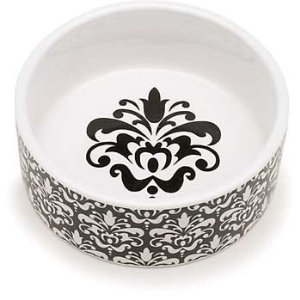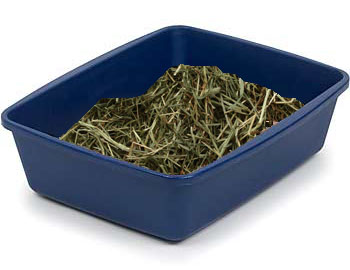Rabbit Care Guide

Housing
Your bunny must live inside. They are social animals and want to be part of the family. Rabbits living outside are at high risk for attack by predators, disease, and susceptible to cold/ heat.
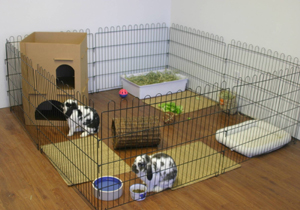
Exercise pens are best. They can be set up anywhere in any shape. They come in different heights and can be purchased in any pet store or occasionally you can find them on Craigslist.
If you choose a cage instead, House Rabbit Society recommends a cage at least 4 times the size of your bunny when she is stretched out (about 8 square feet!). Be sure the cage has a solid floor, not a wire grid floor.
Two heavy crocks – one for food and one for water. Rabbits drink more from a bowl than a water bottle.
Litterbox – Big enough for the bunny to lie down in. No corner boxes! In the bottom of the box, use newspaper or Carefresh (any straw- or paper-based litter is ok), and put fresh hay on top daily. No clumping litters, shavings, or corn cob.
|
|
|
Food
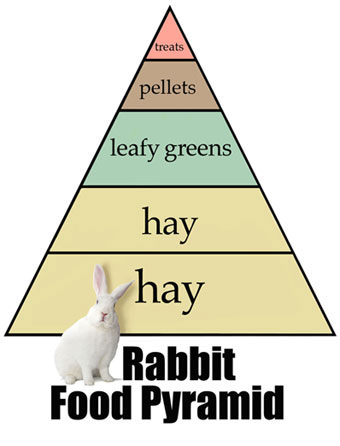
The biggest part of a rabbit’s diet is HAY! Provide unlimited timothy hay or orchard grass. Allergies? Use orchard grass!
Fresh water should be available at all times.
Fresh greens: A minimum two cups for six lbs body weight. Feed a variety daily.
Dark leafy greens: Kale, collard greens, chard.
Herbs: Parsley, cilantro, basil, mint.
Lettuces: Baby greens, romaine, red/green leaf.
Treats: Two tablespoons of fruit or three inch piece carrot.
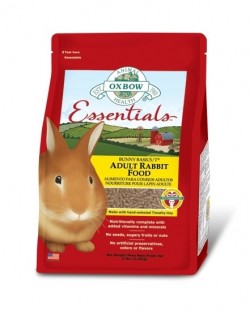 No iceberg or cabbage
No iceberg or cabbage
No yogurt treats or salt licks
For a full list of safe veggies & fruits, visit rabbit.org
Pellets: Timothy-based pellets for adult rabbits (1/4 cup to 1/3 cup per five pounds of body weight) and Alfalfa-based pellets for babies up to about eight or nine months of age. No pellets with fruits, seeds or nuts. We recommend Oxbow’s Adult Rabbit Food.
Exercise & Safety

Bunnies should be out of their pens for at least 2 hours a day. Bunnies do best if you sit on the floor and let them come to you.
Rabbits will chew electrical cords, and can get electrocuted. You can buy protective covers for your electrical cords at the hardware store or IKEA in the lamps section. Block off areas with many cords.
Move houseplants where rabbits can’t reach – check the list of toxic plants.
Toys
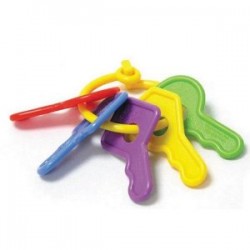
Your bunny will need a variety of toys to keep him entertained and busy. They are also good for keeping your rabbit’s teeth worn down.
Apple branches for chewing
Willow toys
Toilet paper tubes
Things to throw, like hard plastic baby keys
Phone books for bunnies who like to dig
Cardboard boxes with holes cut in at least two sides
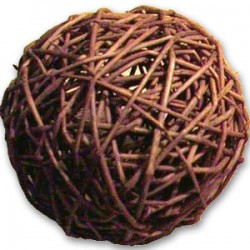
More toys can be purchased at:
binkybunny.com
busybunny.com
leithpetwerks.com
bunnybytes.com
bunnybunchboutique.com
Health
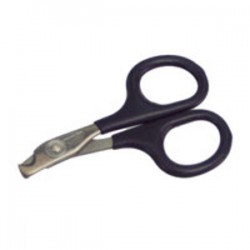 Your bunny will need his nails trimmed every 4 to 6 weeks. Never give a bunny a bath, they can die from shock. Rabbits are naturally clean and constantly groom themselves.
Your bunny will need his nails trimmed every 4 to 6 weeks. Never give a bunny a bath, they can die from shock. Rabbits are naturally clean and constantly groom themselves.
Brush your rabbit regularly. We recommend a curry comb or HairBusterTM brush – wire “slicker” cat brushes are generally too scratchy on rabbits’ sensitive skin.
 Never pick up a rabbit by the scruff – always pick up a rabbit with one hand under their stomach and one under their bottom. Female rabbits who are not spayed have an 80% chance of getting uterine cancer by age 6 – once spayed, rabbits can live 8-12 years, some as old as 15!
Never pick up a rabbit by the scruff – always pick up a rabbit with one hand under their stomach and one under their bottom. Female rabbits who are not spayed have an 80% chance of getting uterine cancer by age 6 – once spayed, rabbits can live 8-12 years, some as old as 15!
Find a bunny-savvy vet and take your bunny in for an initial checkup. Rabbits need no shots, but they do need an annual checkup. Make sure the vet is familiar with bunnies and that they see bunnies on a regular basis. For a list of rabbit- savvy vets near you, see www.rabbit.org.
Fleas and mites are common and can be treated with topical Advantage® or Revolution®. Never use Frontline® on a rabbit.
If your bunny has runny eyes, a runny nose, or soft poop, see a vet!
If your bunny is not eating or pooping, or is having diarrhea, this is a life-threatening emergency. Go to a vet immediately.
Other Animals
- Cats: Rabbits and cats usually get along! The rabbit usually bosses the cat around.
- Dogs: Gentle, calm dogs can work well with rabbits – introduce dogs on-leash, behind an exercise pen from the rabbit. Close a door between the rabbit and dog when you are away from home, and never leave them unattended.
- Rabbits: Every rabbit loves having a bunny friend so they aren’t lonely. Visit a rescue group’s adoption event for “bunny dating” with spayed/ neutered rabbits! Rabbits can fight, and are very picky about who their friends are, so it’s always best to let your rabbit pick her new friend. Better yet, adopt a pair!
Thank You!
Thank you for choosing to adopt a rabbit – you really do save a life when you adopt from a shelter or rescue.
Set up a profile for your new friend on BunSpace, or participate in the forums at binkybunny.com.
House Rabbit Society offers classes, rabbit adoptions, sells toys, and does boarding (www.rabbit.org).
Harvest Home Animal Sanctuary offers rabbit adoptions, bunny dating, sanctuary tours, classes, rabbit boarding, volunteer opportunities, and more! Please donate to save more rabbits in need.
Questions? Email rescue@harvesthomesanctuary.org
Download and Share
- Download this rabbit care guide to print (PDF)
- Have a friend with a bunny? Share the rabbit care guide on Facebook, simply click this link when logged in.
- Email a link to this page to a friend:
https://harvesthomesanctuary.org/rabbit-care - Attach this PDF to an email and send it to your rabbit friends.
